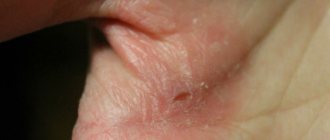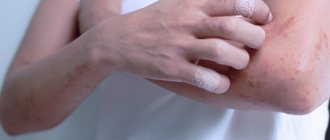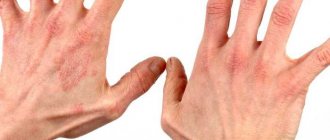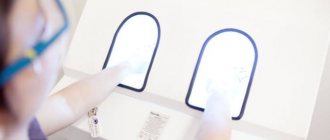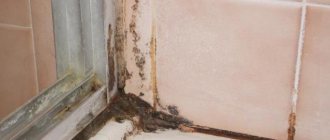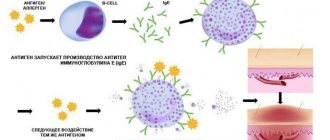Solar dermatitis in adults and children: symptoms and treatment methods
Solar dermatitis is a type of allergic reaction of the body in response to naturally occurring ultraviolet radiation. It also goes by other names - photodermatitis or solar fungus. It occurs in the form of the formation of characteristic rashes with swelling and redness on open areas of the skin.
This reaction is explained by the individual characteristics of the body of people who are prone to other types of allergic manifestations. It is possible to treat such a deviation with both medicines and folk methods at home.
Factors favoring the development of photodermatitis
Sun rays are not among the allergens. Skin disease develops under the influence of photosensitizers. By increasing the sensitivity of skin tissue to UV radiation, these substances become irritants for humans. When sunlight hits the body, irritants begin to release free radicals. Their reaction with body proteins produces compounds that accelerate the development of an allergic reaction.
The causes of sun fungus are divided into two groups:
- Internal. These are accumulations of substances characteristic of obesity and diabetes. This category also includes any malfunction of the organs responsible for removing toxic substances (chronic constipation or hepatitis, liver cirrhosis, kidney failure). In some patients, the disease develops after systemic drug treatment.
- External. Their number consists of photoirritants that come into contact with the skin: cosmetics with benzophenones, musk and benzocaine, household chemicals, plant juice, and external medications.
The disease can develop against a background of weakened immunity, which happens after suffering from severe infectious pathologies. Doctors usually encounter this problem when treating children, for whom even a sore throat triggers an allergy.
Complications and consequences
Complications include the risk of the disease becoming chronic, the possibility of relapse, and the appearance of eczema. If effective treatment is started in time, a positive prognosis is observed. With an integrated approach, the disease can be eliminated in a short time. If there is no treatment, the disease becomes chronic and solar eczema appears.
Due to sun exposure, the disease can often recur. Therefore, timely and comprehensive treatment is important. Traditional medicine is useful, but it is necessary to use it only under the supervision of an experienced specialist.
What are the symptoms?
When solar dermatitis occurs in adults and children, the symptoms are as follows (see photo):
- swelling in the affected areas of the dermis;
- deterioration of general condition;
- pimples that occur cause severe itching, discomfort, and pus may appear;
- severe burning, peeling of the epithelium when large areas are affected;
- formation of a bright red rash on the dermis of the face, arms, shoulders, and back. An allergic reaction in the form of a rash is possible even in places protected from the sun.
In some cases, manifestations of cheilitis and conjunctivitis are noted. The rash with solar dermatitis goes away in 2-3 weeks. It can occur with new exposure to ultraviolet radiation. This is how a chronic form of the disease arises, which is characterized by:
- the appearance of pigmentation;
- dry dermis;
- the appearance of spider veins;
- increased skin pattern;
- infiltration of the epithelium.
The clinical form of the disease is sometimes persistent solar erythema (it is represented by redness and rash that does not go away for many months). Symptoms of erythema do not disappear even when the photosensitizing factor disappears. They intensify with every exposure to ultraviolet radiation.
Medicines
Antihistamine ointments and tablets help to remove inflammation and normalize the patient’s condition. During therapy, the doctor prescribes:
- Ointments with corticosteroid components - “Beta-Methasone”, “Ftorokort”.
- Antihistamines - Tavegil, Loratadine.
- "Chloroquine."
- Anti-inflammatory medications - Ibufen, Nurofen.
- B vitamins.
In the active phase of the disease, medications are used that eliminate inflammation and allergies to the skin. Creams and ointments can help get rid of the main symptoms of dermatitis, but there is a risk of side effects. Therefore, it is advisable to use products with hormonal components locally, for a short period of time, and only on the recommendation of a doctor. If any unpleasant sensations appear, such treatment should be stopped.
If there are no results from treatment, the doctor prescribes special medications, for example, Intrametacin. Sometimes it is necessary to undergo treatment for:
- Nephrologist.
- Gastroenterologist.
- Endocrinologist.
If persistent solar erythema is detected, glucocorticoids should be taken. If glucocorticoid therapy is contraindicated, cytostatics are prescribed, for example, Cyclophosphamide.
Diagnostics
If you notice a rash on your skin after sunbathing, you should immediately consult a doctor. Identifying the fact of photosensitivity during a conversation with the patient, dermatological examination and dermatoscopy of the present rashes will provide the doctor with the opportunity to make an accurate diagnosis and prescribe effective treatment for solar dermatitis.
Determination of the type of photosensitizing substance is carried out by application tests with photoallergens. The allergen is applied to the patient's skin in two rows, after which a light bandage is applied to the area where the research is being carried out. After 24 hours, one row is exposed to ultraviolet irradiation, and the second will be the control.
In order to identify the endogenous causes of the disease, it may be necessary to conduct a biochemical analysis of the patient’s blood and urine, an analysis of the Zimnitsky test, a study of hormonal changes, excretory urography, ultrasound and CT of the kidneys, and ultrasound of the abdominal organs. To completely exclude such an insidious disease as systemic lupus erythematosus, antinuclear factor, C-reactive protein and lupus anticoagulant can be determined in the patient’s blood.
Treatment of solar dermatitis
Obviously, the main thing in the treatment of solar dermatitis in adults is to reduce the main source of the disease - sun exposure. In case of acute symptoms, it is recommended to stay in the shade as much as possible, or better yet at home, completely cover the body with clothes and the face with a scarf. When the symptoms begin to subside, you can begin to sunbathe, but also for a limited time, with great caution.
A complex of drug treatments for solar dermatitis using ointments and other drugs is also prescribed:
- Antiallergic drugs relieve allergy symptoms and reduce the risk of a recurrence;
- Antihistamines that reduce swelling, eliminate the causes of inflammation, normalize blood flow, and reduce pain;
- To avoid the appearance of secondary infections, use antiseptics (Levomikol, Lincomycin ointment);
- Panthenol, Bepanten and a number of other similar ointments and sprays will help restore the skin;
- Antibacterial agents kill microorganisms that have already entered the wounds;
- If the cause of the disease is stress, then it would be advisable to take a course of sedatives;
- Severe forms are treated with hormonal medications. They are characterized by rapid action, but have many contraindications and side effects. Before taking, be sure to consult your doctor.
To treat solar dermatitis, the necessary medications and ointments are prescribed exclusively by a qualified specialist. Consult your physician before using homemade products.
Solar dermatitis: ointments for treatment
At home, to treat the symptoms of solar dermatitis, special ointments are prescribed: (Skin-cap, Bepanten, Protopic, Epidel, etc.) they are used to relieve itching and irritation of an allergic nature. The name of ointment-based drugs may vary. The most commonly used cream is Desitin, Fenistil gel, Elidel cream, Dexpanthenol, Psilo-balm and other ointments and gels that relieve negative manifestations on the skin, as well as itching.
Ointments such as Methyluracil and Zinc, which dry out the skin well and have an antiseptic effect, received good reviews from patients. As a rule, these types of ointments can be purchased at any pharmacy chain without a prescription.
Features of the disease
The disease is treated with antihistamines, anti-inflammatory drugs, and glucocorticoid ointments. Solar dermatitis is considered a subtype of actinic dermatitis. This disease does not appear very often.
Its occurrence is influenced not by the intensity of sunlight, but by the individual ability of the body to respond to photosensitizers. This type of dermatitis often affects adults who suffer from the following allergic reactions (contact dermatitis, rhinitis, hay fever).
This allergic reaction is delayed. Its symptoms appear with frequent exposure to the allergen against the background of the body's sensitivity.
Elena Malysheva will tell you in all colors about solar dermatitis in the following video:
Folk remedies
After consulting with a specialist, treatment of photodermatosis can be supplemented with traditional medicine procedures.
- To relieve symptoms such as swelling and inflammation, compresses made from grated horse chestnut and carrot pulp are used.
- A decoction of calendula, chamomile and plantain will literally do the impossible; it will not only relieve inflammation, help regenerate the dermis, but also reduce stress. Take an assortment of herbs about 400 g, pour 1 liter of boiling water, leave for about an hour, take 1 glass per day on an empty stomach;
- Burning and itching can be reduced by using lotions with kefir and apple cider vinegar.
- Treatment with herbal baths: currant leaf, chamomile has a beneficial effect on the skin.
- Prepare an ointment based on St. John's wort; it will not only relieve inflammation, but also act as an antiseptic. To make it, squeeze the juice from the flowers, put on the fire and bring until the mass evaporates by half, add butter to the broth in a ratio of 1 to 4;
- To soften the skin and give elasticity to the epidermis, you can use sea buckthorn and peach oil.
- Potatoes, the most beneficial and at the same time cheapest remedy, to use it, grate a small tuber on a fine grater, lubricate the damaged areas with the resulting pulp.
Prevention
An important point in the treatment of solar dermatitis is to prevent the recurrence of rashes. For this purpose, patients with this diagnosis should necessarily use sunscreen with an spf factor of at least 30-40.
In addition, it is important to sufficiently moisturize the skin after sunbathing. To do this, you need to purchase a special after-sun cream. It’s good if it contains not only moisturizing, but also soothing components, for example, Panthenol. And, of course, when going to the beach, in order to avoid recurrence of the symptoms of the disease, you should not use decorative cosmetics and perfumes.
Preventive measures
In order to avoid such an unpleasant phenomenon as solar dermatitis, you need to adhere to the following rules:
- Do not overuse sunbathing, especially in hot weather.
- Do not use cosmetics or perfume while under the sun.
- Use photoprotective creams, especially for children and people with very white skin.
- In summer, wear light-colored and white clothes that reflect the sun's rays.
- When taking any medications or hormonal contraceptives, avoid exposure to the open sun.
- During the hot period of the year, switch to a lighter diet, do not drink alcohol, herbs, spices, smoked meats, or strong coffee.
- After being under the sun or tanning, the skin must be moisturized with cream or special milk.
- Elderly people, as well as those with chronic diseases of the liver and endocrine system, are not recommended to sunbathe at all. This leads to the appearance of solar lentigo (pigment spots) and disorder of internal organs.
It is necessary to apply photoprotective cream to skin exposed to the open sun, children’s skin especially needs this.
Solar dermatitis is not at all harmless; it can lead to the development of a chronic disease, eczema. Treatment of photodermatitis does not always give good results, so it is much easier to prevent it by following preventive measures.
